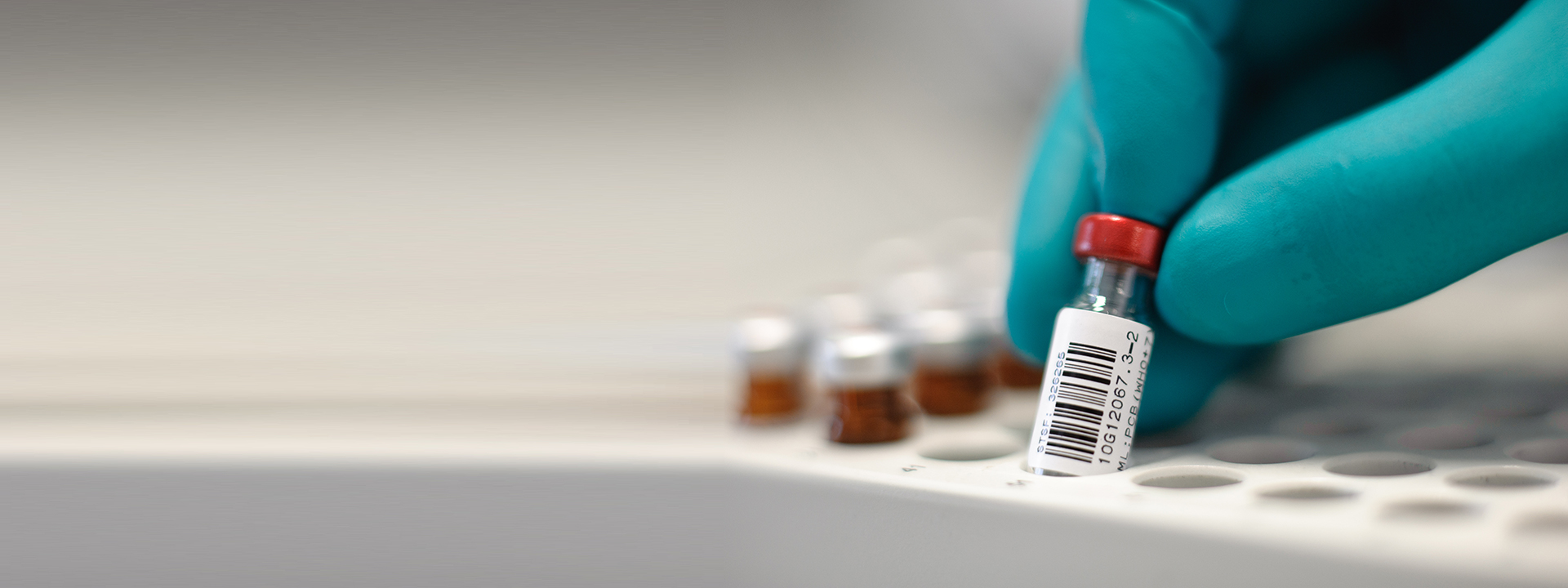Dioxins and PCBs
Ensure the safety and compliance of your food and feed products by taking advantage of our accredited analysis of dioxins and polychlorinated biphenyls (PCBs). Our advanced testing services help you meet stringent EU regulations, reduce health risks, and maintain consumer trust.
Key services
- Polychlorinated dibenzodioxins and -furans (PCDD/Fs) – all 17 toxic congeners
- Dioxin-like PCBs (DL-PCBs) – 12 PCB congeners with WHO-assigned toxic equivalent factors
- Non-dioxin-like PCBs (NDL-PCBs) – 6 indicator congeners (ICES6-PCBs)
- Total PCB analysis – all 209 congeners, in line with California Proposition 65 and GOED standards
- TEQ calculation – based on WHO(2005)-TEF and optionally WHO(2022)-TEF, other TEF-systems on request
- Accredited methods – according to DIN EN ISO/IEC 17025:2018
Additional services
Beyond standard testing, we also offer:
- Analysis of biota, water, soil, sediments, materials, chemicals, and human samples (e.g. breast milk, blood)
- Monitoring programmes for food and feed producers
- Consultation and data evaluation for regulatory compliance and risk assessment
- Customised reporting for specific regulatory frameworks (e.g. US EPA Method 1668)
Dioxins and PCBs: Let's look how they are classified
Dioxins – toxic legacy of industrial processes
Dioxins, or polychlorinated dibenzo-p-dioxins and -furans (PCDD/Fs), are a group of highly toxic, persistent organic pollutants (POPs) formed as unintentional by-products in industrial and combustion processes involving chlorine. Of the 210 known congeneres, 17 are particularly toxic, with 2,3,7,8-TCDD being the most toxic one – classified as carcinogenic to humans by the World Health Organization (WHO). Dioxins are chemically and thermally stable, fat-soluble, and resistant to biological degradation. As a result, they accumulate in the food chain, mainly meat, eggs, dairy products, fish and shellfish, posing long-term health risks to humans through dietary exposure.
PCBs – Industrial chemicals with lasting impact
Polychlorinated biphenyls (PCBs) are a group of 209 synthetic chlorinated compounds that were widely used in industrial applications. Although banned in many countries, they persist in the environment and food chain, where they accumulate, particularly in animals. In recent years, it has also been found that PCBs can be formed as unwanted by-products in industrial processes. Of the 209 congeners, 12 show toxicological properties similar to dioxins and are classified as dioxin-like PCBs (DL-PCBs), while the remaining are referred to as non-dioxin-like PCBs (NDL-PCBs). Both types pose significant health risks, including endocrine disruption, immune system impairment and potential carcinogenicity. Due to their widespread historical use and environmental persistence, PCBs remain a critical focus of food and feed safety monitoring.
Your Competence Centre for POPs
At the Eurofins Competence Centre for dioxins and PCBs, we combine decades of experience with cutting-edge technology to deliver:
- Analysis in nearly every matrix including food and feed, biota, environmental matrices, chemical and consumer products
- Analysis in compliance with EU requirements using GC-MS/MS or GC/HRMS-techniques
- Regulatory expertise
- Rapid turnaround times and tailored customer service
- Continuous innovation, e.g. automatisation of sample preparation
Legal bases and guidelines
- Commission Regulation (EU) 2023/915 (maximum levels for contaminants in food)
- Directive 2002/32/EC (maximum levels for undesirable substances in animal feed)
- Commission Recommendation 2013/711/EU (reduction of dioxins and PCBs in food and feed)
- Stockholm Convention on Persistent Organic Pollutants (global framework for POPs)
- Directive 2000/60/EC (EU Water Framework Directive and Environmental Quality Standards (EQS) for priority substances)
- EN 1948 -Dioxins and PCB in stationary source emissions
Get in touch
Would you like to find out more about our testing solutions, or do you need individual analytical support? Contact us today to get in touch with our experts.
